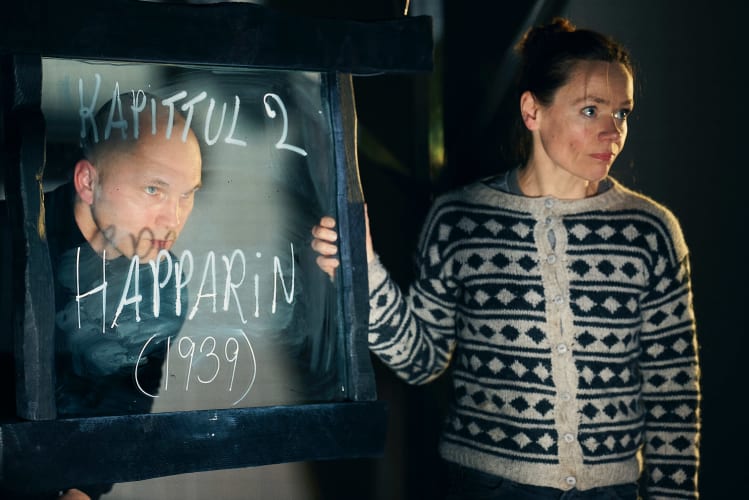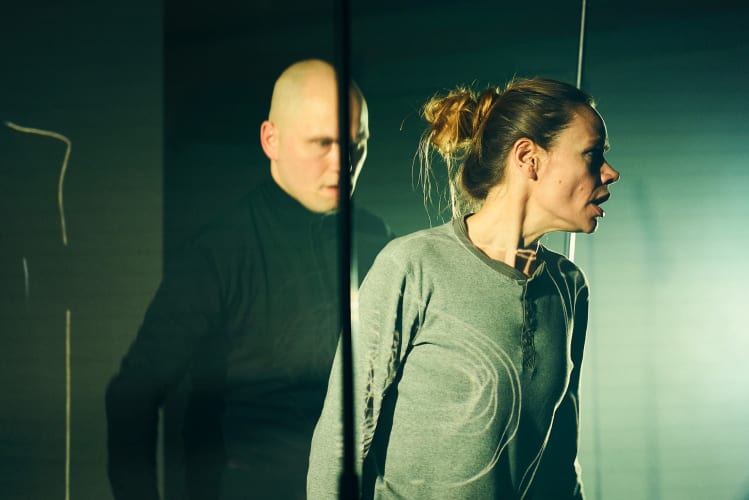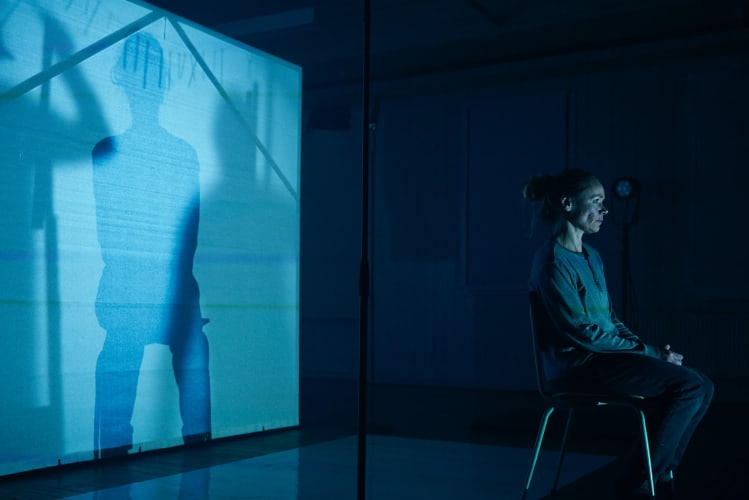Faroese theatre company, Det Ferösche Compagnie’s Castle of Joy is one of those rare gems that start small but build entire worlds through simple, highly imaginative use of space and mind-bending physical transformations through subtle movement gearshifts. How one person can morph into an entire cast of characters is sheer theatrical genius.
The piece shares a heart-breaking, true story of Joy and his struggle to encounter the ostensibly real world outside of his fertile imagination as we are clearly guided through a series of chapters chalked up on a square window frame, one of the simple props that imaginatively turn the tiny stage into Faroe Islands landscape. Titles such as the "bully" and "homework" are scrolled to make the narrative easy to follow in a set-free space.
Born in 1925, Pól Jóhannus Poulsen lived in a small village in the Faroe Islands and was ostracised from his society because he was considered to be an “oddball” as we hear repetitively. Friends, teachers, the local nurse pull him up for not fitting the mould, in Joy’s case, meaning that he found it hard to verbally express himself and couldn’t draw “straight lines", only tangled webs. He is praised, however, for having a “big imagination”, clearly a metaphor for neurodiversity, even though this is never directly established. Here, difference is presented as nothing more than a shy youth who inhabits a rich inner world, terrified of authority figures who abuse him physically and mentally rather than try to understand his brain.
Part narrated in English, part in Faroese, there’s a musicality and depth hearing the story in two languages that authenticates the piece. While production values are instantly connectable to the swathes of imaginary theatre created for children, it’s a delight to see such techniques used in a production for adults, from shadow puppetry to the playful music and quirky characterisations.
Kristina Sørensen Ougaard is phenomenal as Joy, but also an entire village of characters from mother, frustrated teacher and first love to terrifying matron and evil doctor. Her astounding physical performance allows her vast range as every characterisation is believable, shadowed and assisted in the background by writer-director Búi Dam throughout the performance.
Dánjal á Neystabø sits stage left on the piano next to an intriguing line-up of metal percussions. He is accompanied by radio play-style sounds as Dam crunches on a tray of gravel in the shadowy background. The clashing of cymbals denotes the change of each scene. Initially, the music builds pastoral images with the piano tinkering in the background, but it gradually transcends into darker film noir tones as the plot descends into doom and gloom.
The Faroe Islands at first appears to offer the space and pastoral setting ideal for Joy to play in his imagination. There are birds tweeting and Joy makes friends with a robin. Empty barns turn into palaces, and an entire landscape is free for him to roam and play. Then everything crumbles after claiming responsibility for an attack on a child. Joy is dumped in an abusive, prison-like unit for the mentally unwell on mainland Denmark. Amidst the backdrop of the Second World War, a life of abuse, isolation and abhorrent medical experimentation on the inmates inside the institution continues as usual.
It’s hard to watch Joy’s world crashing in around him and suffering such neglect, yet there remains something admirably resilient about him, despite being locked up in an isolation cell and forgotten about for weeks on end with no food. While the bleak plot rolls on, the soundscapes ring deep. The screams from the “idiots” who are locked in the basement to the cries of Joy dumped in an isolation cell echo out into the dark auditorium with gloom and horror. They only serve to highlight the lost paradise of nature that awaits Joy on his return home.
As the production draws to a close, we see a version of Joy’s castle on screen and an old black and white photograph of him standing proudly outside his building. Returning to his village, Joy reclaimed a plot of land belonging to his father and built hundreds of rooms out of scrap metal looking out to sea forming an eccentric concoction of his world, finding at last an outward expression.
Joy’s story may be resigned to a specific time and place when mental health was little understood, but there’s a universality about his plight than can be plugged into on all levels. As Castle of Joy burrows deep into the interior world of Joy and brings his story to life with such energy and sadness, it’s impossible not to be moved by his journey as it shines a light on how difference feels in young people, or any age for that matter. Loneliness, misunderstanding and neglect are at the root of his story and yet, despite all obstacles, Joy fulfilled his dream, thus ending on a message of hope.


